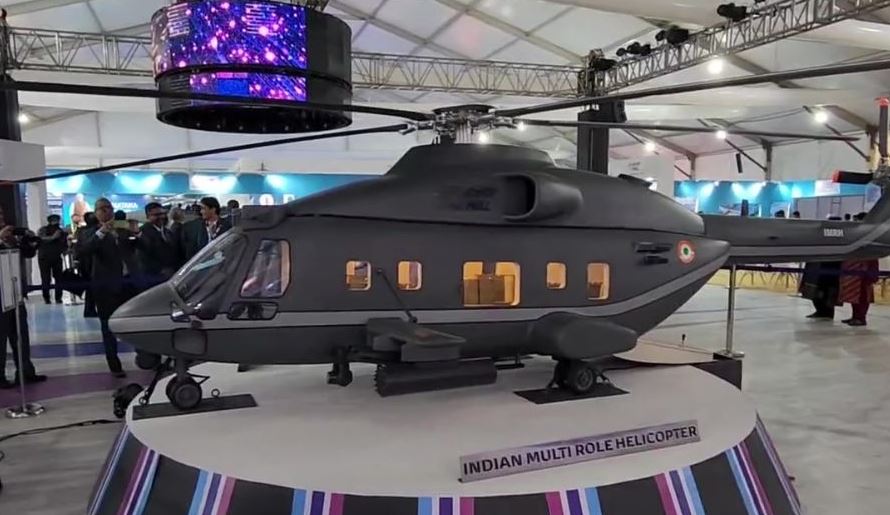Hindustan Aeronautical Limited (HAL) first announced of Indian Multi-Role Helicopter (IMRH) program in 2017. HAL IMRH is expected to replace depleting fleets of Mi-8s and Mi-17s serving in Indian forces.
In July 2022, the Indian aerospace giant signed an MoU with French firm SAFRAN to jointly develop the engine for IMRH after HAL completed the platform’s design at ‘architectural level’ in 2021.
HAL intends to develop the IMRH rotary platform, which is a 13 to 14-tonne class category helicopter primarily to replace Indian Forces ageing fleets of Mil Mi-8s and Mi 17s choppers.
Currently, HAL manufactures indigenous helicopters of 3 to 5-tonne class categories.
HAL’s Light Utility Helicopter (LUH) is a 3-tonne class category chopper, whereas its Advance Light Helicopter and Light Combat Helicopter both are 5-tonne class category rotary platforms.
Considering the rapid upgradation in armory by Indian forces in recent past it would not be an exaggeration to say that the IMRH project is among the top priorities for HAL. However, the development period of a platform, trice in size to HAL ALH-Dhruv and LCH Prachand will take a minimum of 10 years if not more to take its first flight.
The successful development of a medium-lift chopper will only aid HAL’s future ventures in heavier class category for a variety of roles. Though a heavy attack platform like Apache is not in HAL’s radar as of now, but if any requirements emerge in future, HAL will most likely go with same traditional design that it carried for ALH, LCH Prachand and continuing with the IMRH.
The question remains: does India need a heavier attack helicopter like Apache in the first place? Time is a crucial factor in developmental projects like HAL IMRH and the utility of these rotary platforms — especially those with offensive roles — depend on challenges of warfare which are evolving rapidly with time.
Taken as reference, the US forces, who are the major operators of Apache attack helicopters have shifted their interests toward faster rotary platforms, with improvised tilt rotors and push rotors like Bell V-280 Valor, Sikorsky-Boeing SB-1 Defiant, which are heavier yet swifter than contemporaries in their respective categories.
So, does this imply that development of HAL IMRH with a traditional rotor design will be a lost cause as there are assumably faster aircrafts available! The answer is definitely ‘NO’. The development of IMRH will become base for several other future programs of HAL with different roles including attack. The utility of such fixed/ rigid rotor multirole choppers was required 30 years back and will be required in future as well.
The scope for improvement in any given defence platform is always there and it only changes as per the objectives of the platform. For instance, Bell-Boeing V-22 Osprey, the tiltrotor aircraft, which performs a wide range of operations for the US forces was first conceptualised in the ‘70s, it took its first flight in 1989, got commissioned in 2007 and even after 40 years, the platform still has issues, which led to a series of accidents/ crashes. Later based on the same design, Bell came up with an improved and comprised platform, V-280 Valor. Hence, room for platforms like IMRH will be always there depending on operational objectives of Indian defence forces.
However, it is also necessary for HAL to incite R&D on alternate designs and improvised avionics systems that could pave way for a variety of future indigenous platforms.
PNN
